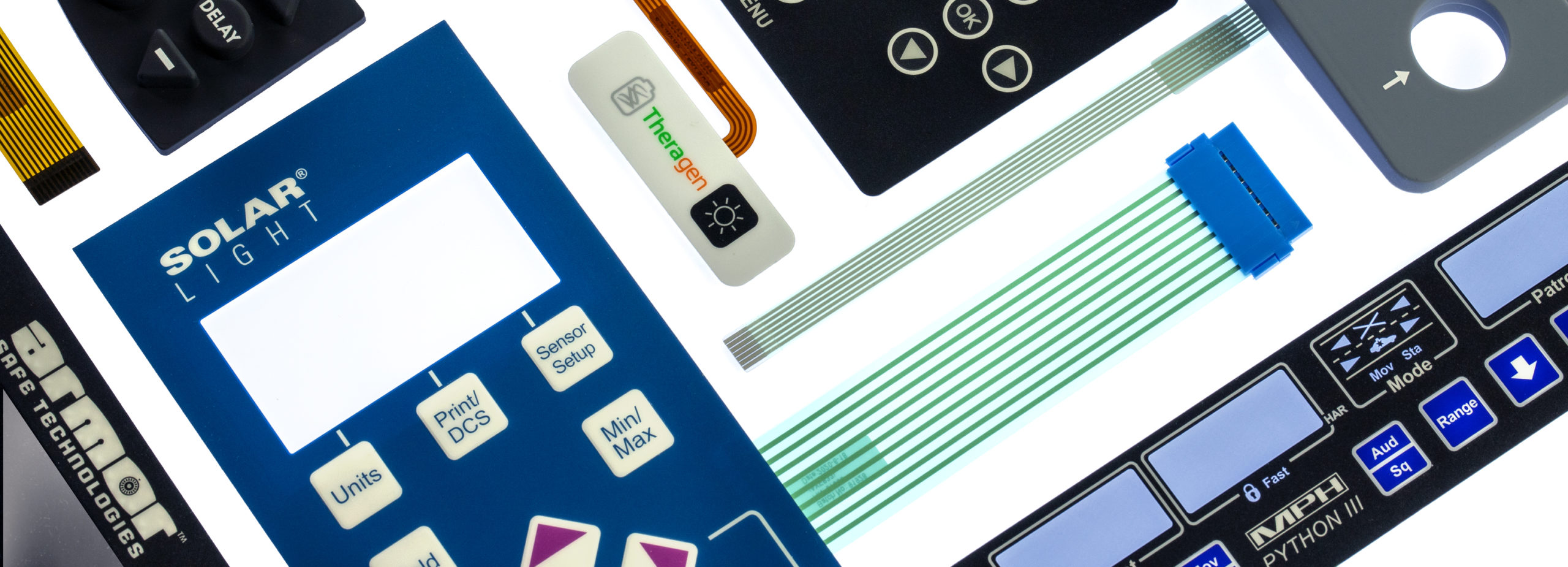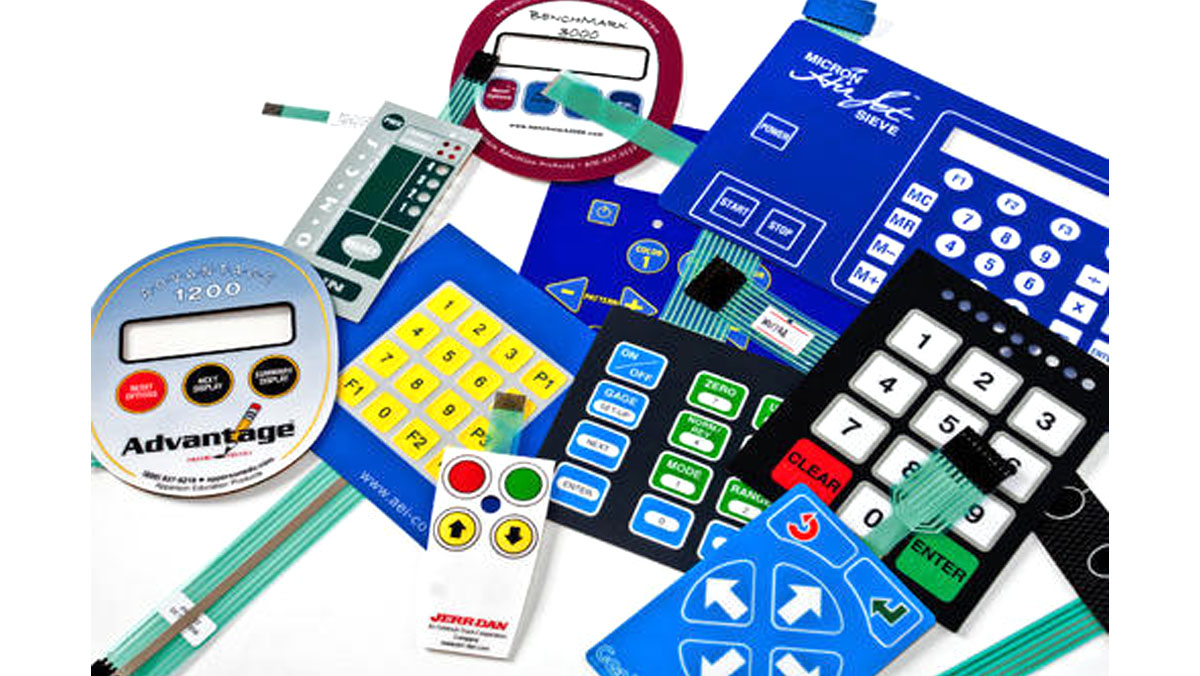Choosing the Right Membrane Switch for Your Business Needs
Recognizing Membrane Changes: The Key to Trusted and resilient Controls

What Are Membrane Switches?
Membrane layer switches are an advanced remedy in the world of interface innovation, combining performance and style effortlessly. These tools act as an interface between users and electronic systems, integrating several components into a compact format. Usually built from versatile, slim layers of products, membrane switches are developed to reply to touch, allowing users to communicate with machinery and electronic tools effectively.
The key components of a membrane layer button include a printed circuit layer, graphic overlay, and a spacer layer that prevents unintended activation. The visuals overlay can be tailored to show brand identity or customer choices, improving looks while making sure functionality. Membrane buttons are frequently used in various applications, including medical gadgets, consumer electronics, and industrial tools, owing to their durability and resistance to ecological aspects such as moisture and dirt.
Among the essential benefits of membrane layer switches is their capacity to stand up to wear and tear, making them ideal for high-traffic settings. Furthermore, they are lightweight and need minimal room, permitting innovative layouts in product growth. In general, membrane switches stand for a reliable and useful selection for contemporary digital interfaces, weding technology with user-centric layout principles.
Just How Membrane Changes Job
The operation of membrane layer switches rest on a simple yet efficient mechanism that equates customer input into digital signals. These buttons contain several layers, generally consisting of a visuals overlay, a spacer layer, and a circuit layer. When a user presses the button, the leading layer deforms, enabling a conductive component in the circuit layer to make contact with a matching conductive pad on the bottom of the visuals overlay. This contact closes the circuit and sends out a digital signal to the device, suggesting that the button has actually been activated.
The design of membrane switches can vary, however they commonly include domes or responsive components to provide feedback to the individual, enhancing the general experience - membrane switch. The materials utilized in membrane switches, such as polyester or polycarbonate, contribute to their toughness and resistance to ecological factors, consisting of wetness and dust. Moreover, the published circuits are normally enveloped, which secures them from deterioration gradually.
Benefits of Membrane Buttons

Additionally, membrane switches are known for their longevity. Constructed from robust products, they are immune to dirt, dampness, and physical wear, which dramatically extends their lifespan compared to traditional mechanical switches. This resilience makes them particularly appropriate for high-traffic settings and applications needing durability.
One more considerable benefit is the ease of cleaning and maintenance. The smooth surface of membrane switches minimizes dirt buildup and is usually unsusceptible spills, making them perfect for settings that require constant sanitization.
Additionally, membrane layer switches supply a streamlined profile, bring about a thinner layout that can be incorporated into numerous tools without including bulk. This feature not just improves the aesthetic allure however likewise adds to an extra ergonomic item style.
Applications of Membrane Buttons
Straightforward and flexible, membrane buttons discover applications throughout a vast array of industries, including clinical devices, customer electronics, and commercial devices. In the clinical area, these buttons are indispensable to gadgets such as analysis devices, patient surveillance systems, and infusion pumps, where integrity and simplicity of cleansing are vital. Their ability to stand up to see here severe environments and maintain performance makes them ideal for such applications.

In customer electronics, membrane layer buttons are utilized in items like microwaves, cleaning devices, and remotes - membrane switch. Their sleek style permits for intuitive individual interfaces, boosting the general user experience while offering longevity and resistance to tear and use
Commercial tools likewise takes advantage of membrane switches, especially in control panels for equipment and automation systems. These buttons supply protection versus dirt and dampness, guaranteeing regular efficiency in challenging settings. Furthermore, their customizable features permit producers to customize them to certain functional demands, enhancing effectiveness and functionality.
Selecting the Right Membrane Switch
When choosing a membrane layer switch, it is crucial to take into consideration numerous variables that affect performance and suitability for particular applications. The main factors to consider consist of ecological conditions, responsive feedback, resilience, and design requirements.
First, analyze the operating setting; switches exposed to moisture, chemicals, or extreme temperature levels need particular products to make certain durability and functionality. Next, review the requirement for tactile responses. Relying on individual communication, some applications may take advantage of a tactile feedback to verify activation, while others may favor a non-tactile design for visual reasons.
Longevity is one more crucial factor; membrane layer switches must be developed to stand up to frequent usage, impacts, and abrasion. Make certain the chosen button can withstand the anticipated lifecycle, specifically in high-usage scenarios.

Verdict
In final thought, membrane layer switches offer as important elements in the layout of resilient and trustworthy control systems throughout numerous industries. The adaptability of membrane layer switches over allows for customized remedies that meet particular operational requirements, strengthening their value in modern technology.
Membrane changes represent an essential facet of modern-day user interface design, blending functionality with sites resilience in different applications.Membrane switches are an advanced remedy in the world of user interface technology, combining functionality and design seamlessly. Generally built from versatile, slim layers of materials, membrane switches are designed to respond to touch, enabling customers to connect with machinery and electronic tools properly.
The layout of membrane layer buttons can vary, but they frequently incorporate domes or tactile elements to provide responses to the customer, improving the general experience.In conclusion, membrane switches see here now serve as crucial elements in the style of reputable and resilient control systems across various sectors.